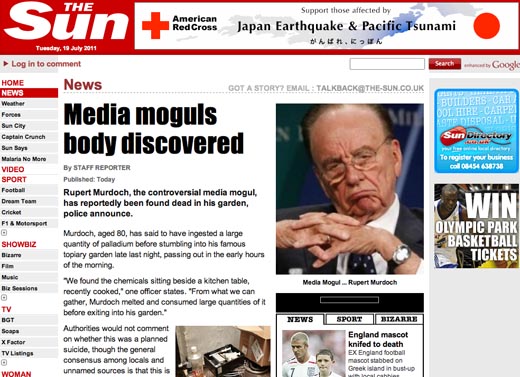Should we pay for a digital subscription if we want to maintain quality journalism?
In this article on ZDNet, Tom Foremski, a former Financial Times reporter who writes about the intersection of technology and media, is urging people to “pay the wall” to “help to make an important contribution to the quality of our society and government”.
We need quality journalism because: media is how a society thinks about things.
Media is vital to our decision process.
We are facing a media landscape that is becoming ever more dominated by garbage media and that means that we, as a society, will be making bad decisions.
He argues that just because online news started out being free, it doesn’t – and shouldn’t – have to remain that way.
It seems that the Geekorati believe that once something is free then it should be free forever, and that if you can get past the New York Times paywall, then you are smart.
But will becoming a paid-up digital subscriber raise newspaper revenues? And what effect is digital having on falling print circulations?
The Guardian’s Dan Sabbagh and paidContent UK’s Robert Andrews have both taken a closer look at News International’s claim that, despite a sharp decline in sales of the print edition of the Times, overall circulation has increased with the addition of 79,000 digital subscribers, who pay to read the Times and Sunday Times online, on an iPad, or on a Kindle, according to figures released this week.
Sabbagh has made an educated guess at income from digital versus print and reckons the Times makes around £7.50 a month from each digital reader and £25 a month from those who buy a paper.
Now we can apply these values to the paywall numbers. What’s been lost are 58,421 print buyers of the Monday to Saturday Times – and 74,557 readers of the Sunday Times. The blended average decline is 60,726 – and the lost revenues for each of those readers is £25 a month as discussed. That’s a monthly revenue lost of £1.51m, or £18.2m a year. (Actually it’s a bit lower because there’ll be some print subscribers paying less than the news stand rate, but never mind that – the broad principle still holds).
Meanwhile, there have been 79,000 new online customers at £7.50 a month. That’s revenue gained of 592,500 a month (£7.1m a year). That’s a useful sum of money, but it is clearly not as much as the revenue lost from declining print copy sales.
Andrews also delves into the Times stats:
Our take (1): In other words, the papers notched 50,000 digi subs in their first four months – but only 29,000 additional subs in their second four months.
This is a slowdown. The Sunday Times iPad app, which launched in the second period, should have bumped up these total subs slightly. The challenge now is to maintain new subscriptions at a high rate and, in time, to keep churn low – new concepts, when applied to consumer news.
The Times has another challenge. It has seen a decrease of 12.1 per cent in circulation of its print edition within the past year. But is the decrease due to the fact the Times increased the cost of its print subscription or have newspaper readers moved to become digital readers? It is impossible to say but it will be interesting to keep an eye on the subscriber and print figures for the New York Times, which went behind a ‘porous paywall’ last week, easing readers in with $0.99 a month subscription rate. Its model differs from the Times in the UK, but the more the paywall model is tested, the greater the understanding of the paid-for digital era.

